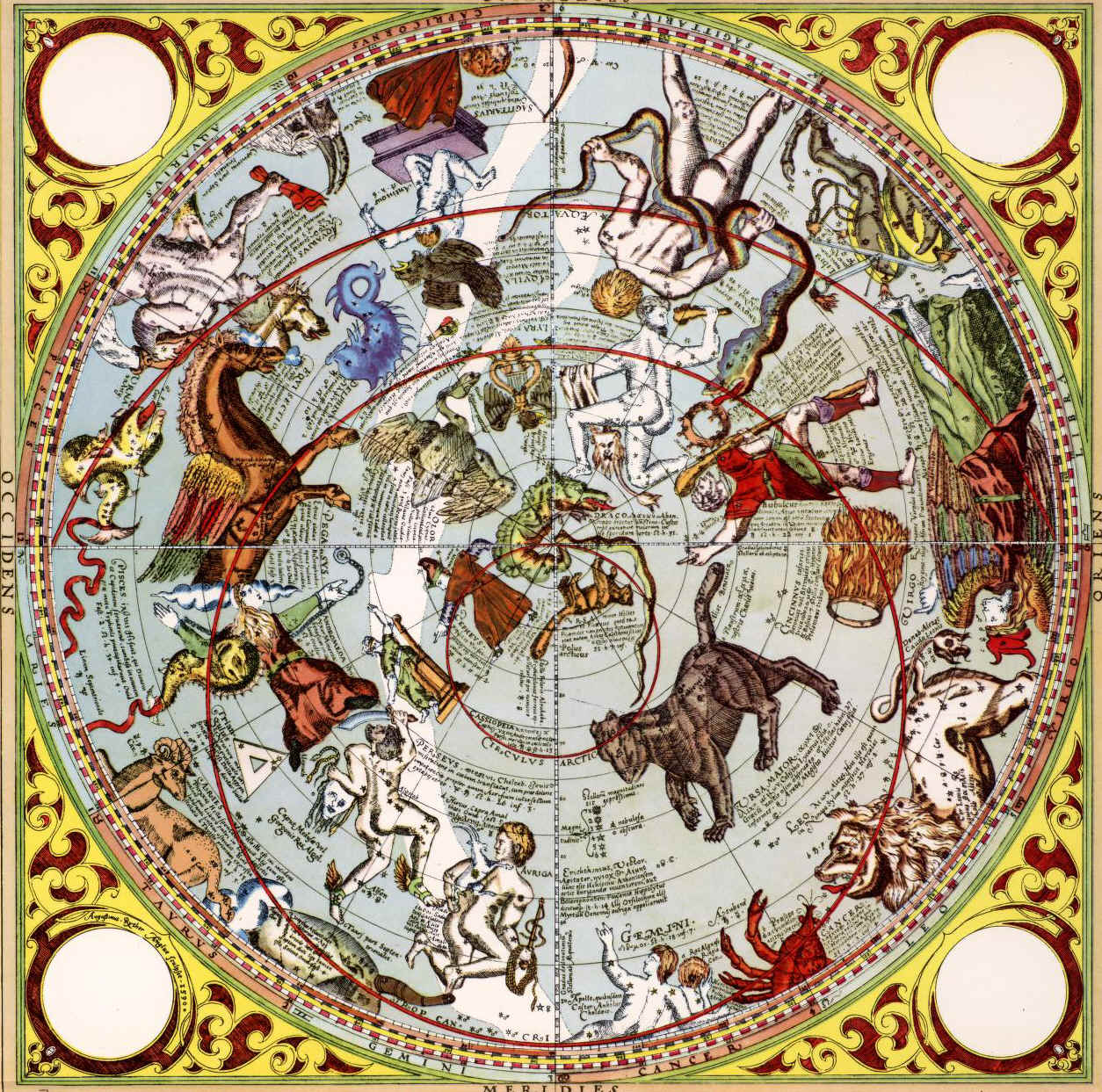
|
Thomas Hood |
The Use of the Celestial Globe in Plano, set forth in two Hemispheres.., Imprinted for Thobie Cooke at London, 1590 |
Thomas Hood
The
Use of the Celestial Globe in Plano, set forth in two Hemispheres.., Imprinted
for Thobie Cooke at London, 1590

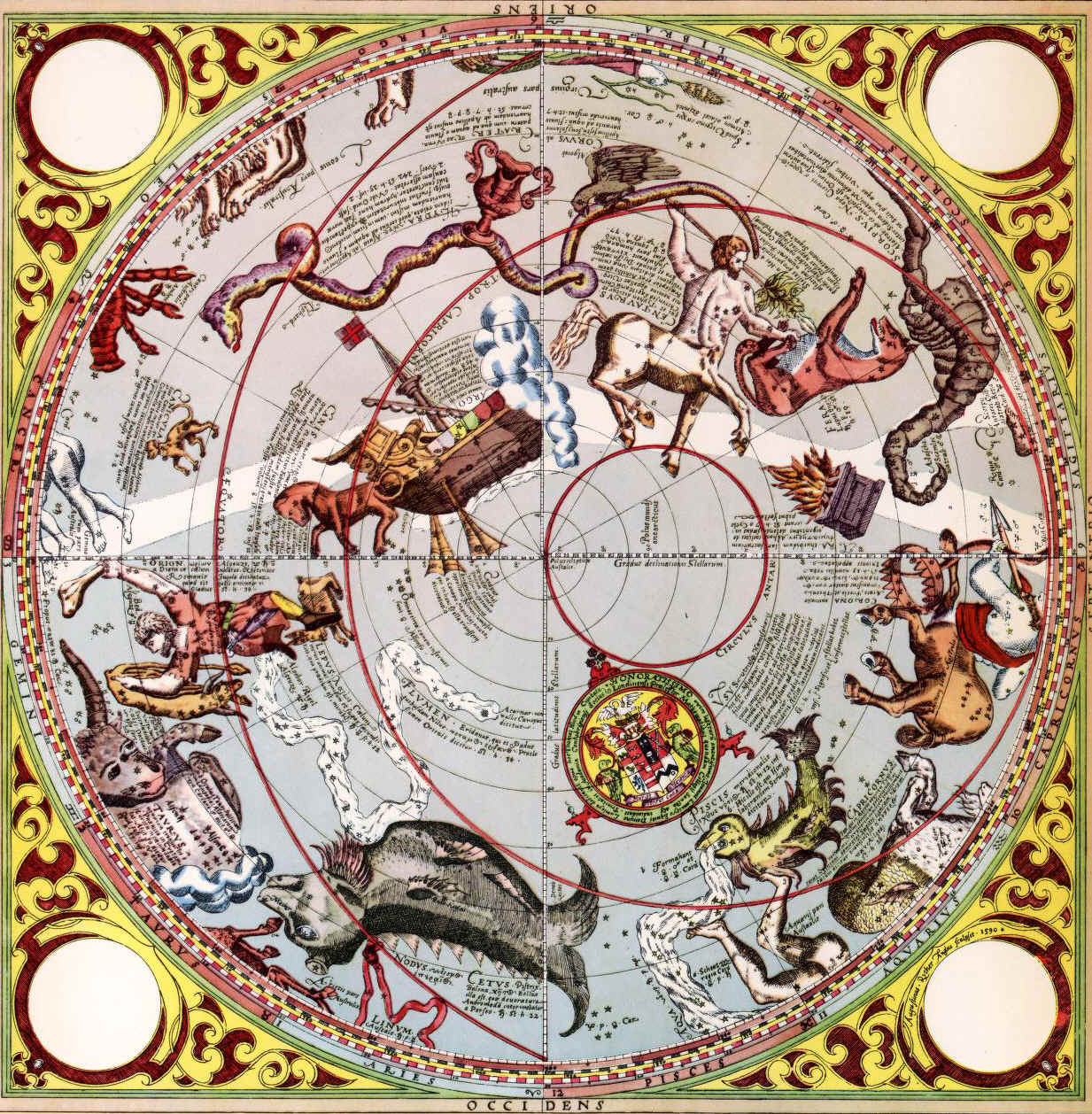
La
seguente presentazione del volume di T. Hood è proposta per cortesia di
SOKOL
BOOKS Ltd.
Le
due tavole, incise nel 1590 da Augustinus Ryther, sono invece presentate per
cortesia di
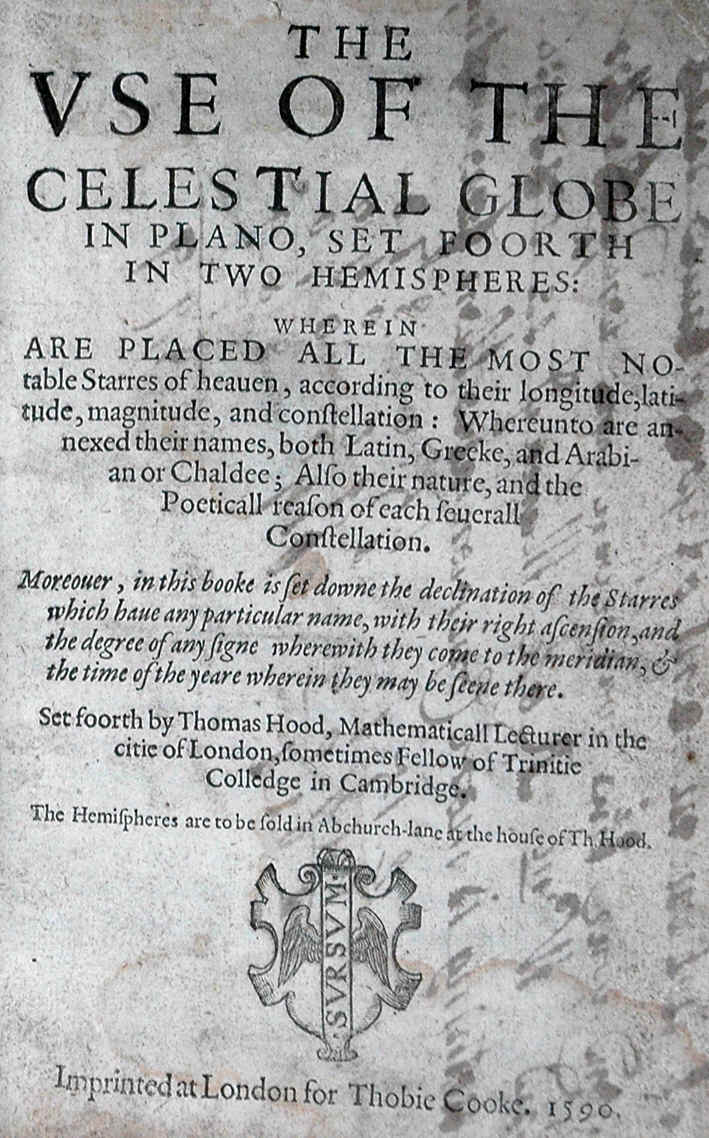
VERY RARE, only early edition of
this work on the use of celestial globes. The text is in the form of a dialogue
between a Scholar and Master and was intended to aid the student astronomer/
cosmographer/ navigator to recognize the stars and their constellations. It
contains a table of stars listing their longitude, latitude, magnitude and
constellation. There is also a description of the nova that appeared in
Cassiopeia in 1572-4. This event was witnessed across Europe and attracted the
attention of the best astronomers of the day, among them Tycho Brahe, who
published his account in 1575. This new star initially reached the brightness of
Venus. Hood recounts the various theories regarding this phenomenon (that it was
one of the stars of Cassiopeia or a comet) with much of the argument centering
on whether this new light moved or not. By showing that it remained fixed, Brahe
proved that it was not an atmospheric disturbance, such as a comet, but a new
star. While Brahe himself was not a supporter of Copernicus’ theory, that the
sun not the earth is at rest at the centre of the universe, his discoveries in
relation to the nova made this theory easier to accept.
Hood (fl. 1582-1598), a graduate of
Cambridge, held the first English lectureship in mathematics and was one of the
first popularisers of the ‘new learning’. This appointment was initiated and
financed in 1582 by Thomas Smith, to whom this work is dedicated, and the
lectures were given in the city of London. Smith was the first Governor of the
East India Company, Governor of the Muscovy Company and Treasurer of the
Virginia Company and a patron of science, trade and exploration. Hood’s
publications, which ranged from an English translation of Ramus’ ‘Elements
of Geometrie’ to a guide for mariners, as well as his inventions of
mathematical instruments, show the wide scope of mathematics as a discipline in
the late C16. He also lectured on geography and navigation. He is credited with
popularising astronomy and the Copernican theory in England. This is the first
of his two works on the celestial globe; the second was published in 1592
(‘The use of both the Globes Celestiall and Terestriall’, London). In 1589
Hood was, with Hakluyt, one of the subscribers to Raleigh’s Virigina Company;
he invented a sector, ancestor of the slide rule and the calculating machine in
1598, the same year as Galileo.
According to the present t-p, one
could also buy from Mr Hood himself at his house in Abchurch Lane ‘two
hemispheres’ (
STC 13697 (4 libs. + Kraus in US) ‘Tp has advt. for the sale of the hemispheres at the author’s house in Abchurch Lane. They are eng. by A. Ryther and lacking in most copies’. ESTC s118875. Hind I, p.139. Houzeau and Lancaster 2785. Taylor ‘Late Stuart and Early Tudor Geography’, 346. Not in Honeyman.
Le due tavole sono costruite in proiezione polare equidistante ed hanno come riferimento i due poli eclittici, sono in visione convessa. Le tavole si estendono fino all’eclittica che fa da perimetro ad entrambe, pertanto le costellazioni zodiacali appaiono tutte ed ognuna parzialmente rappresentate nei due planisferi. Curiosamente la Bilancia non sembra autonoma ed è disegnata sovrapposta alle chele dello Scorpione.
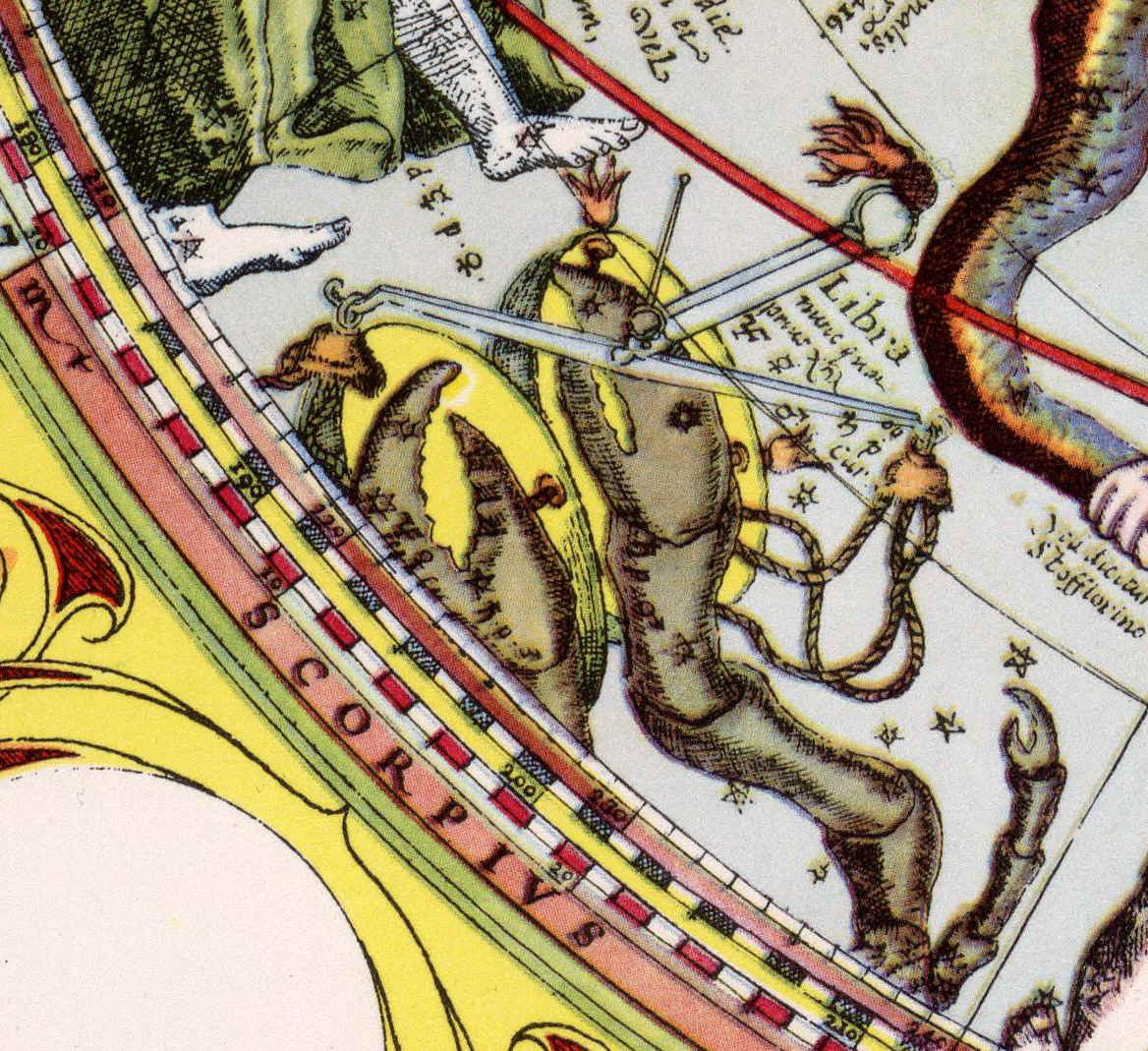
la Bilancia non sembra autonoma ed è disegnata sovrapposta alle chele dello Scorpione.
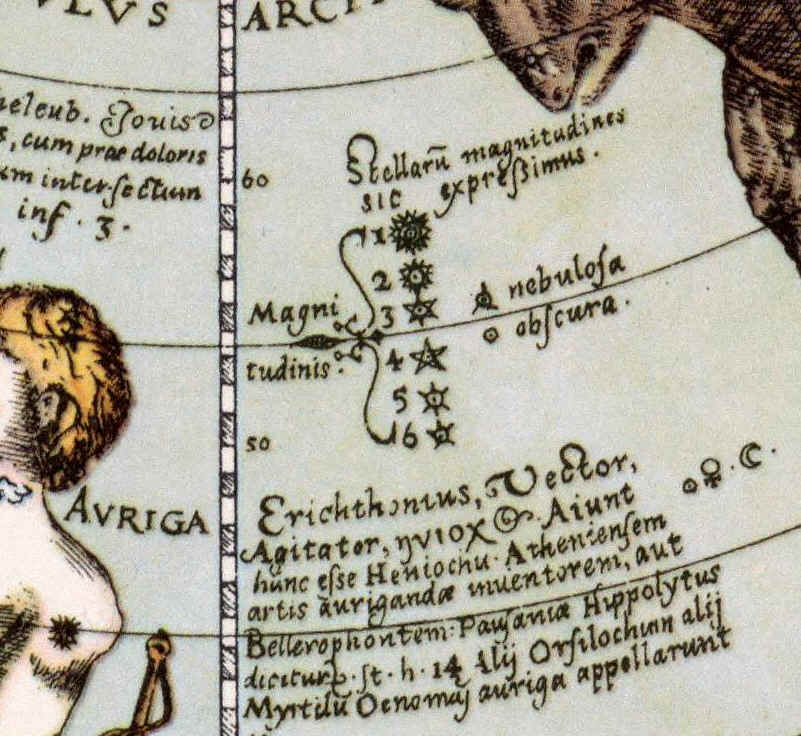
Stellaru magnitudines sic expressimus
Vi
appaiono le stelle suddivise in sei magnitudini, sono segnalate inoltre le
nebulose e le oscure, la relativa scala Stellaru
magnitudines sic expressimus è
posta tra le costellazioni dell’Ursa
Major e dell’Auriga. I nomi in diverse lingue delle stelle e delle costellazioni
sono ampiamente elencati in didascalie poste a fianco dell’immagine
mitologica. Il modello seguito dall’incisore Augustinus Ryther è quello
utilizzato nel globo del Mercatore. Oltre alle costellazioni tolemaiche
ritroviamo Antinous, Caput Medusae e
la Chioma di Berenice , questa sotto il nome di Cincinnus.
Hood è il primo cartografo a segnalare con un nome proprio il nastro che unisce
i due Pesci zodiacali, Linum
Septentrionale e Linum Australe,
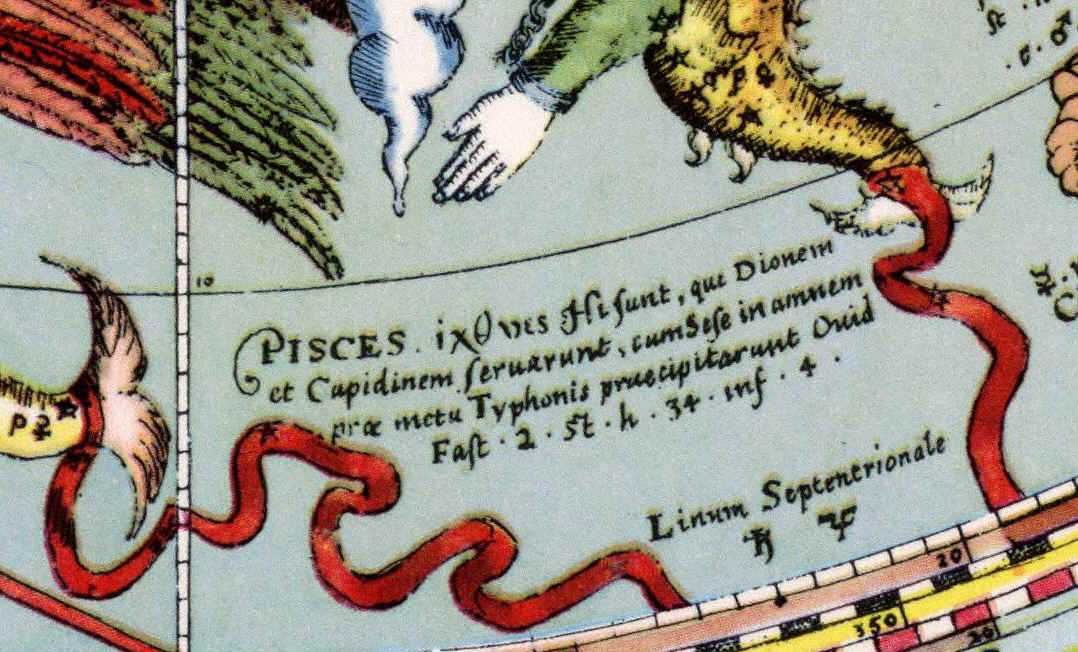
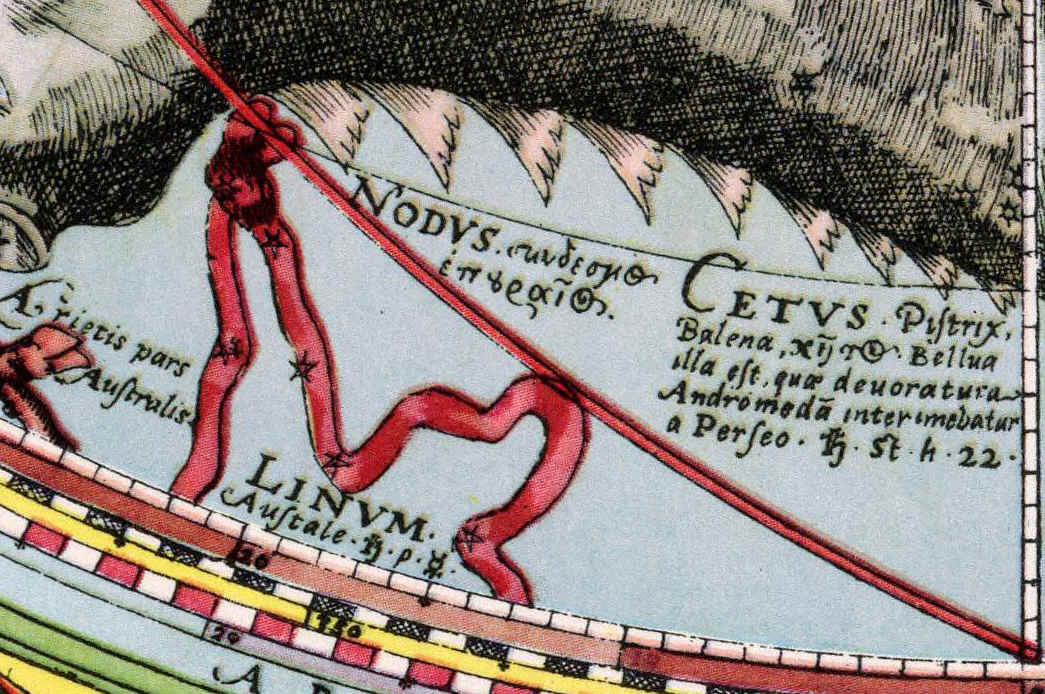
Linum Septentrionale e Linum Australe
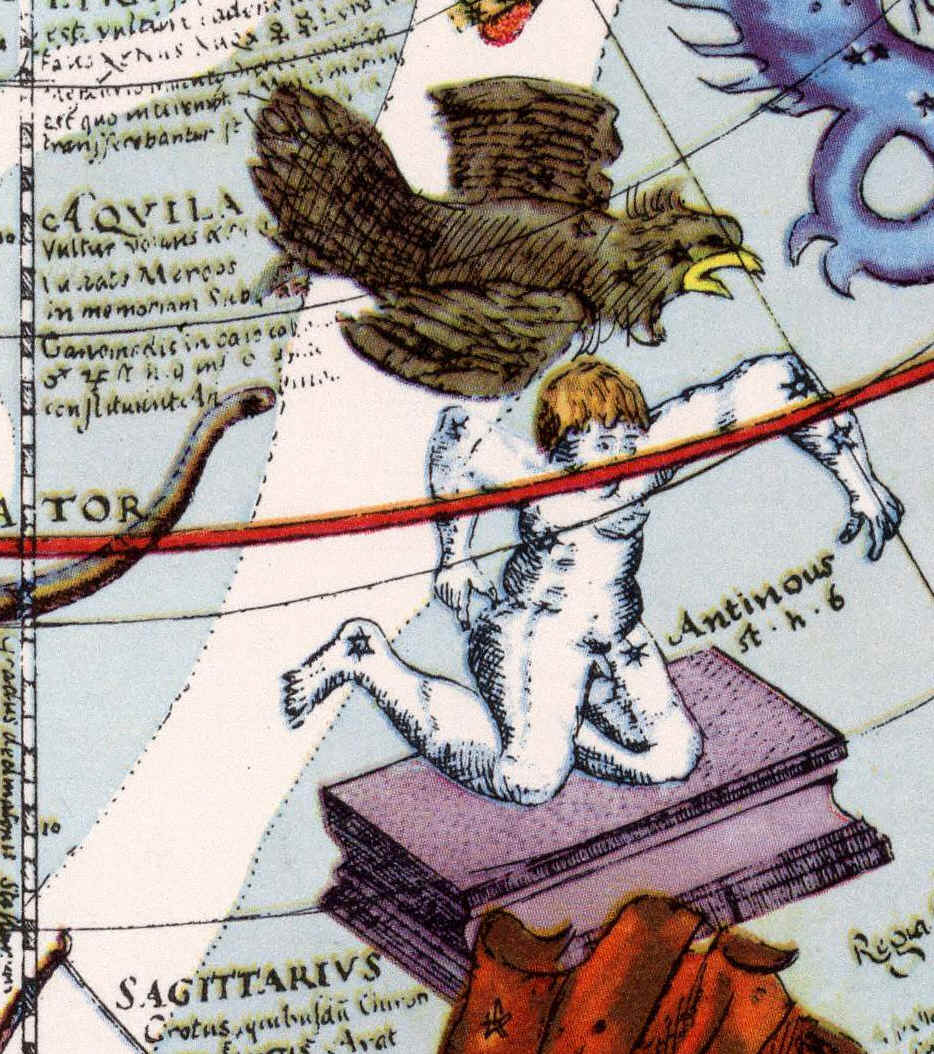
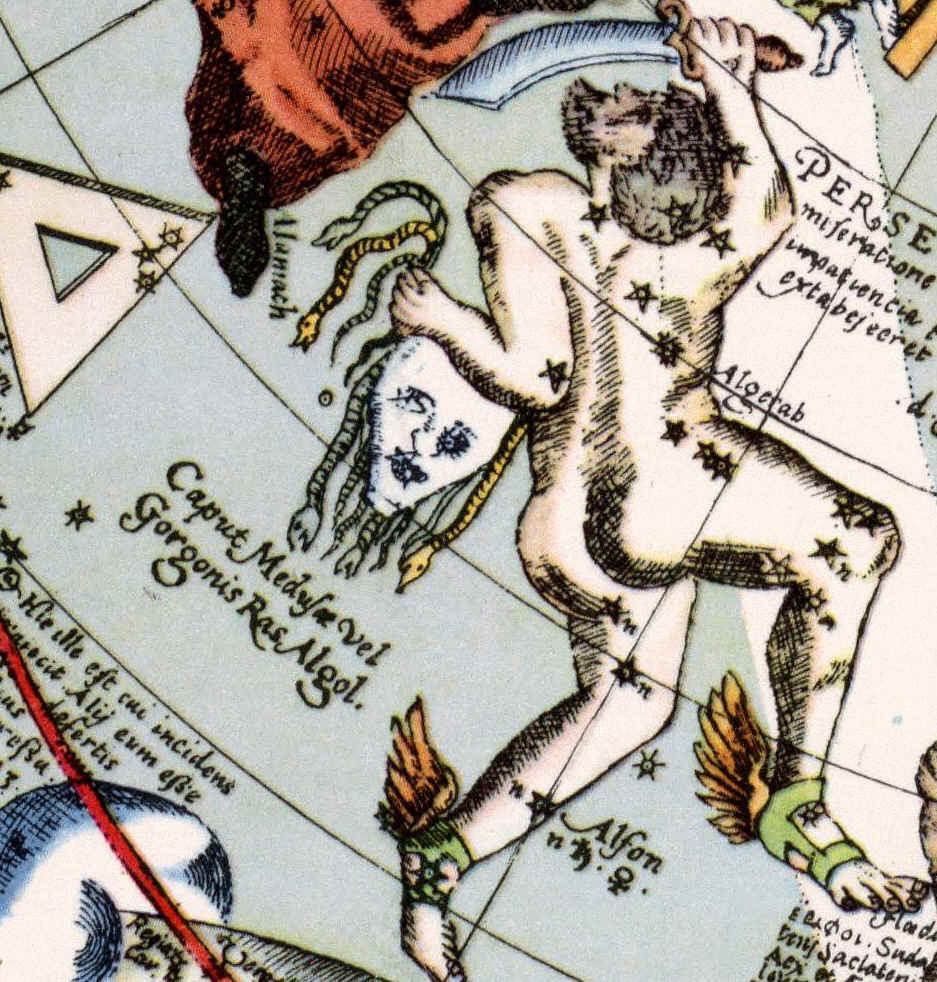
Antinous e Caput Medusae vel Gorgonis RasAlgol
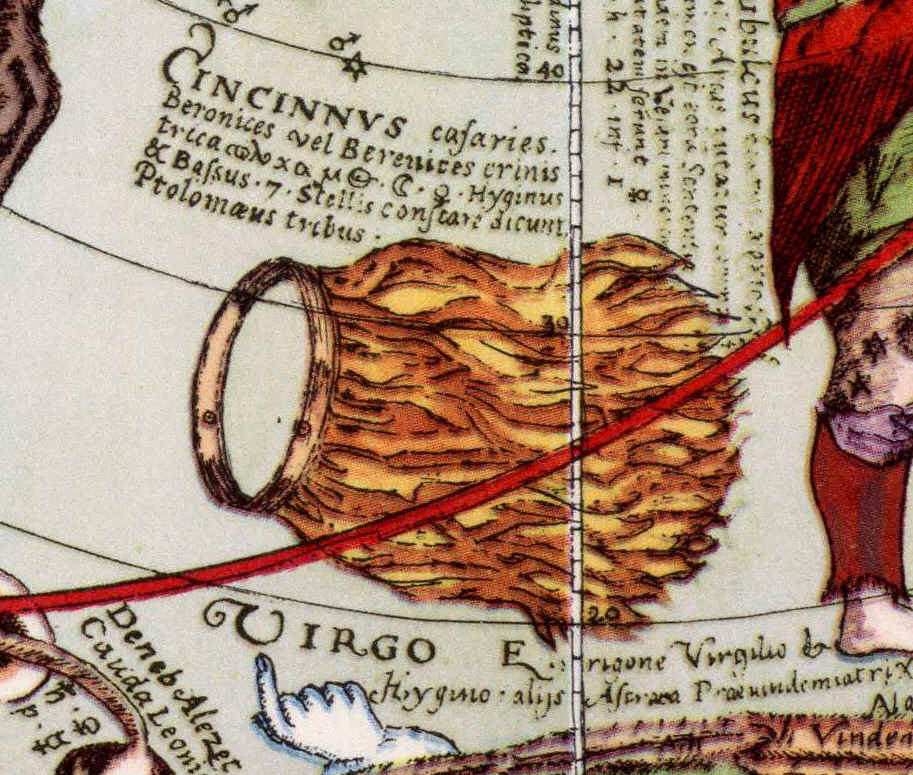
Cincinnus
Il
reticolo eclittico è composto dai due poli, dall’eclittica che riporta una
scala graduata al passo di un grado di longitudine, da cerchi di latitudine ogni
10° e da linee radiali ogni 30° di longitudine; su quella che congiunge i
punti primaverile e autunnale degli equinozi è posta una scala graduata con
tacche di un grado di latitudine, Gradus
Latitidinis Stellarum.
Il reticolo equatoriale è rappresentato dalle porzioni di pertinenza dell’equatore, dai due poli, dai circoli polari artico ed antartico e dai tropici del Cancro e del Capricorno. Sulla linea che unisce il solstizio invernale con quello estivo è posta una scala graduata, Gradus Declinationis Stellarum, con il passo di un grado di declinazione.
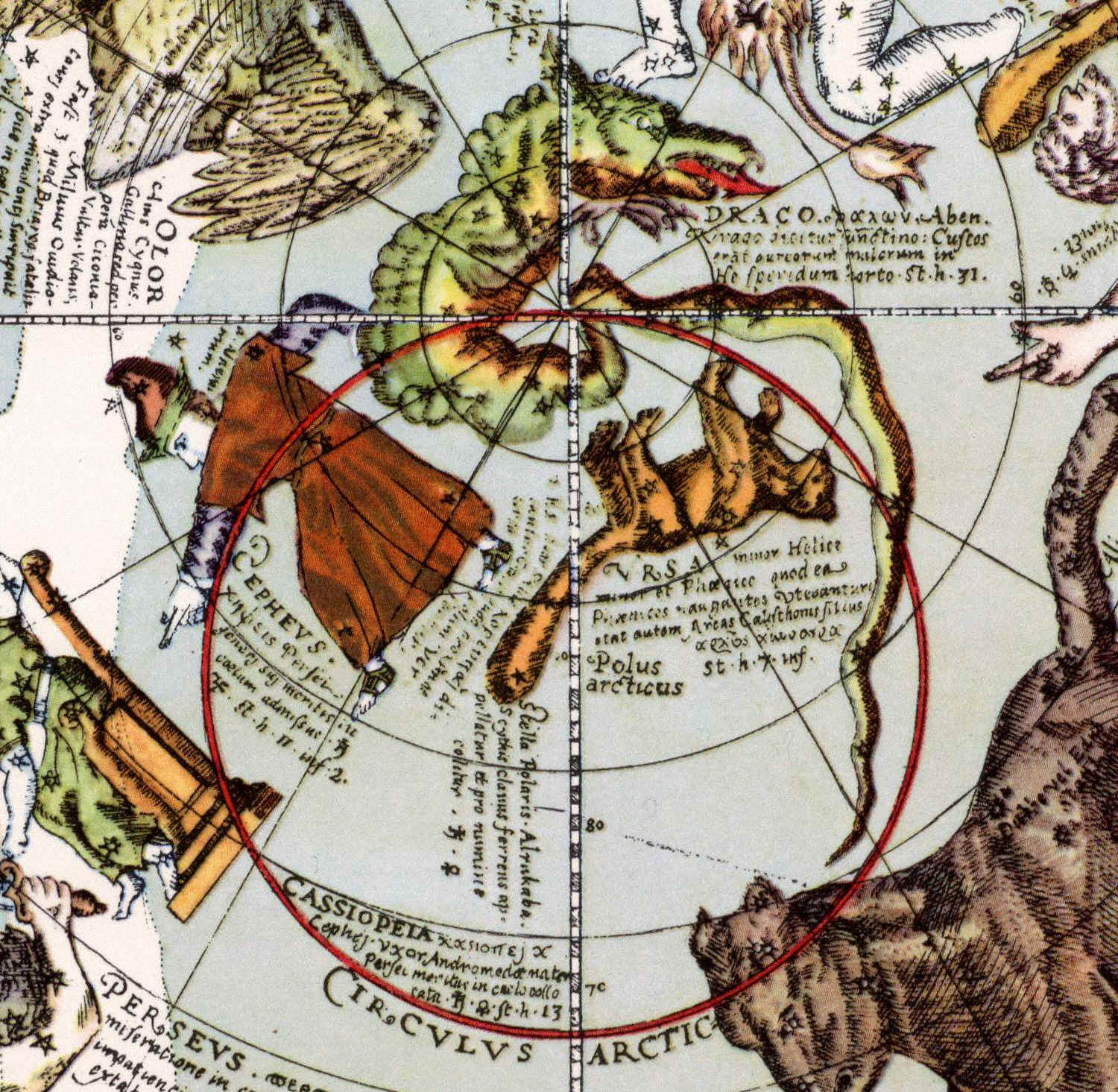
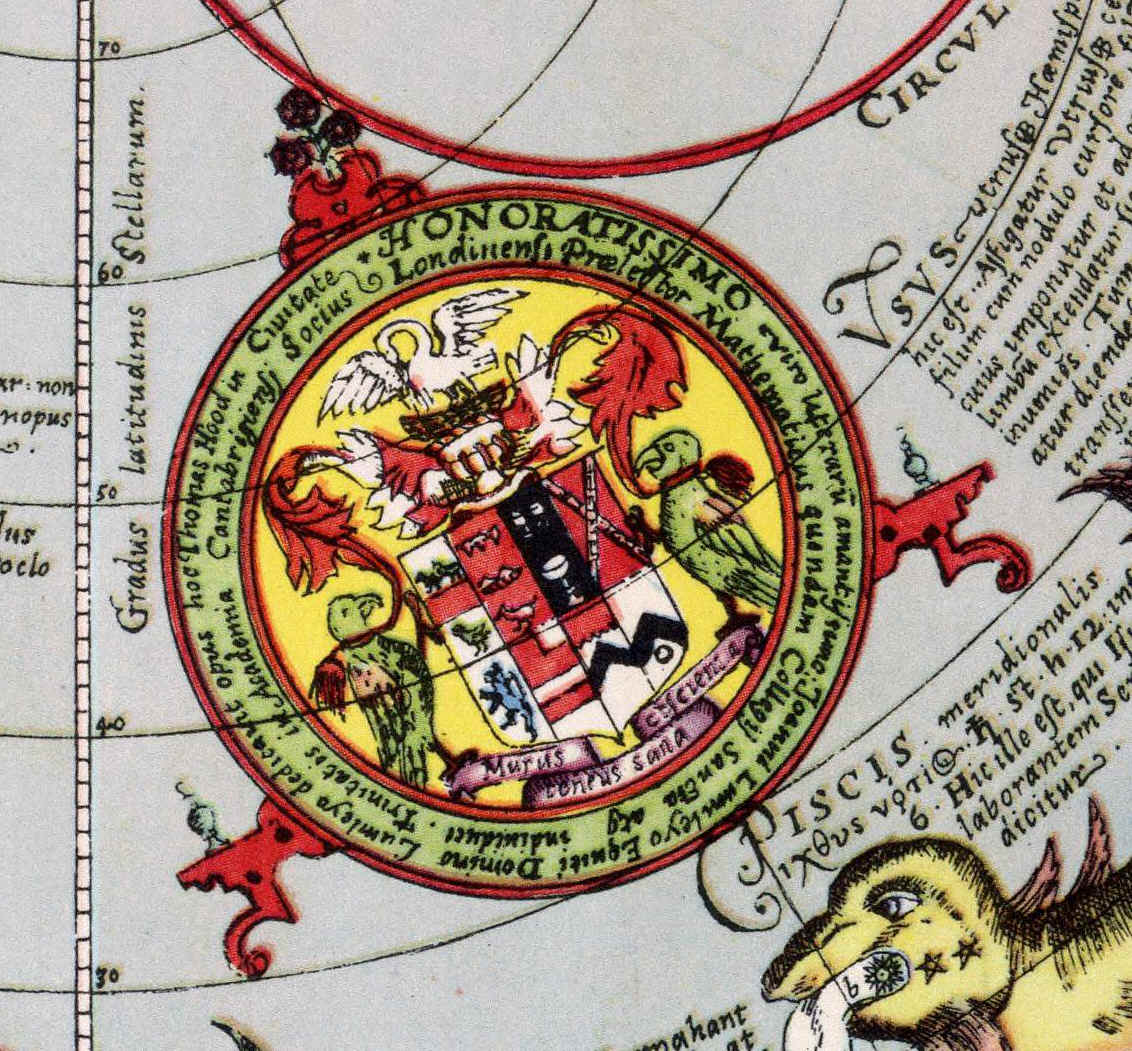
I poli artici ed il circolo polare artico Cartiglio con dedica
Emisfero
Boreale
Augustinus
Ryther sculpsit.
1590
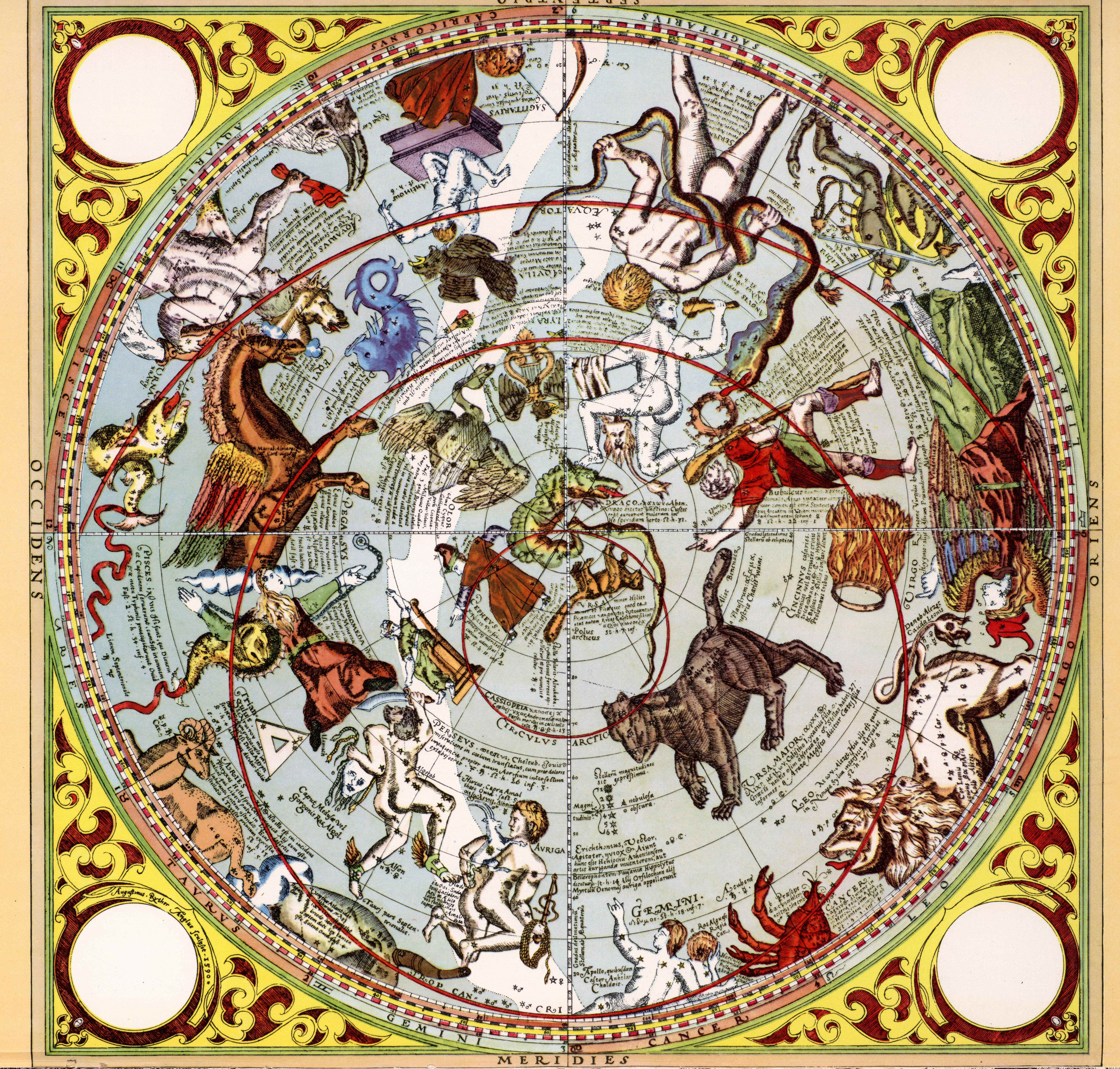
Emisfero
Australe
Augustinus
Ryther Anglus sculpsit. 1590.
Honoratissimo
viro literaru amatissimo, Joanni Lumleyo. Equiti Domino Lumleyo dedicavit opus
hoc Thomas Hood in Civitate Londinensi Praefector Mathematicus, quondam Collegii
Sanctae atq. Individuce trinitatis in Academia Cantabrigiensi Socius.
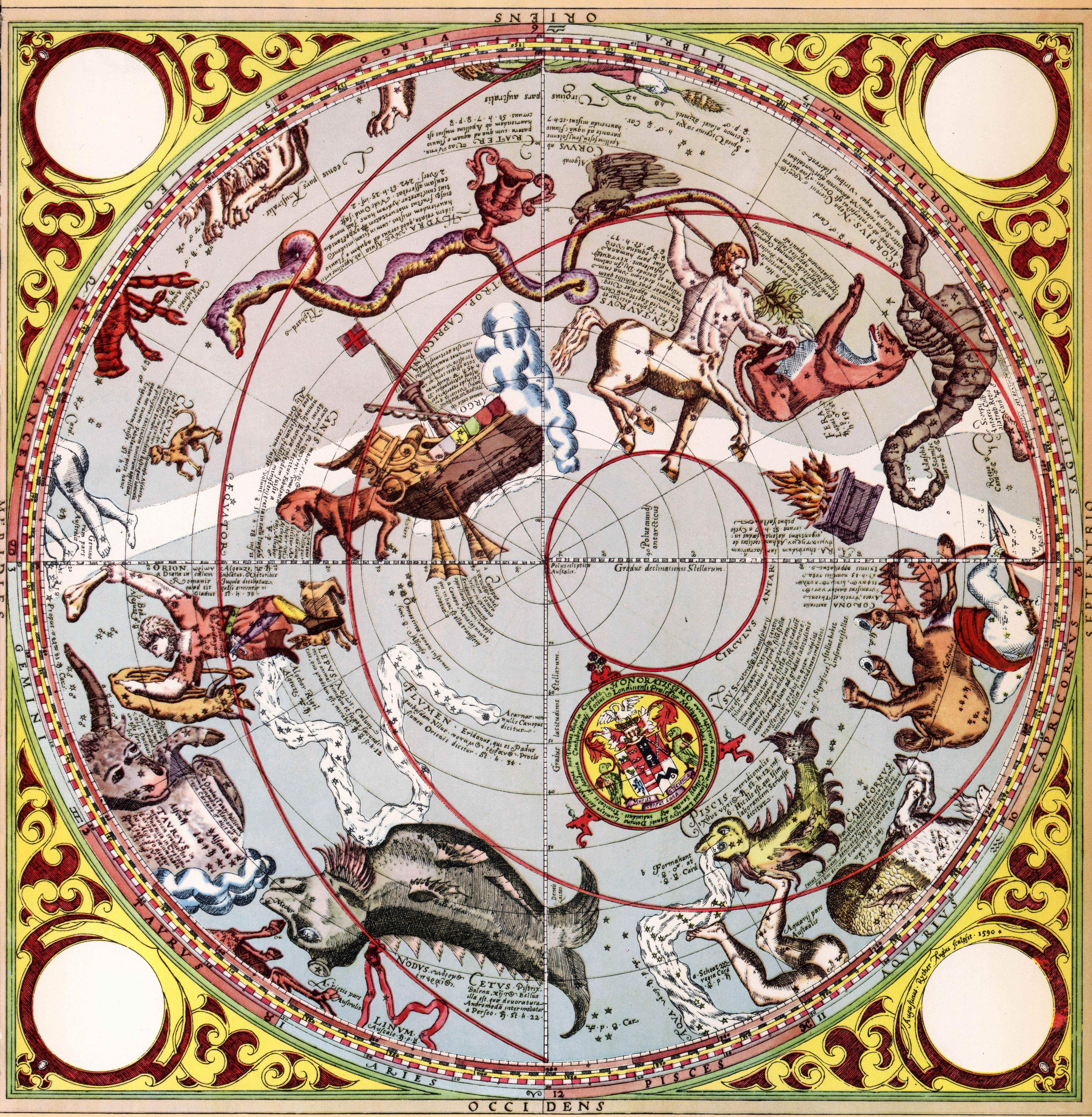
Sulla
vita e le opera dell’autore consulta
http://en.wikipedia.org/wiki/Thomas_Hood_(mathematician)
http://en.wikisource.org/wiki/Page:Dictionary_of_National_Biography_volume_27.djvu/276
http://munksroll.rcplondon.ac.uk/Biography/Details/2256
Sulle
costellazioni introdotte da Hood ed
ora non più utilizzate leggi
http://www.atlascoelestis.com/desu%20hood.htm
di FELICE STOPPA
AGOSTO 2014